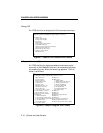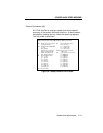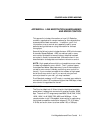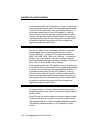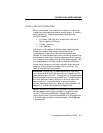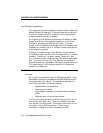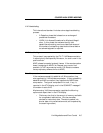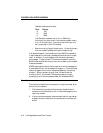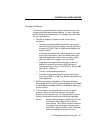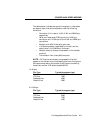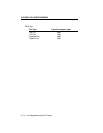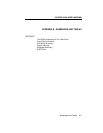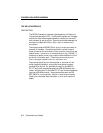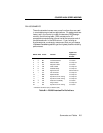
COURIER HIGH SPEED MODEMS
Link Negotiation and Error Control A-7
Throughput Guidelines
The following guidelines should help to make the most of the
modem's advanced performance features. In many instances,
experimentation and experience will indicate what works best
for your applications.
1. Optimal throughput is attained under the following
conditions:
• The communications software allows fixing the serial
port rate higher than the connection rate, by setting the
software to 115.2K, 57.6K, or 38.4K bps and setting the
modem to &B1.
If the software automatically switches serial port rates
to follow the connection rate, the modem's serial port
rate must be also set to follow the connection rate for
each call, &B0, and throughput will be limited.
Installations with specialized software may want to
enable a fixed serial port rate for ARQ calls and a
variable serial port rate for non-ARQ calls. See the &B2
command in Chapter 4.
• The call is under data compression.
• The data is comprised of text files rather than binary
files such as .EXE or .COM files. See the table at the end
of this appendix.
2. MNP5 compression is disabled for files that are already
compressed, and 8-bit binary files that appear to the modem
to be already compressed. MNP5 is disabled by setting the
modem to &K3.
3. The file transfer is not slowed down by a file-transfer
protocol. Many non-text files require a file transfer
protocol, but the results vary. For example, certain public
domain file transfer protocols have the following effects:
Kermit Newer versions support packets up to 9K and
a sliding window design to eliminate turn-
around delay. With earlier versions, however,
throughput may be severely reduced due to
short block lengths (possibly under 128 bytes)
and acknowledgment turnaround time.



